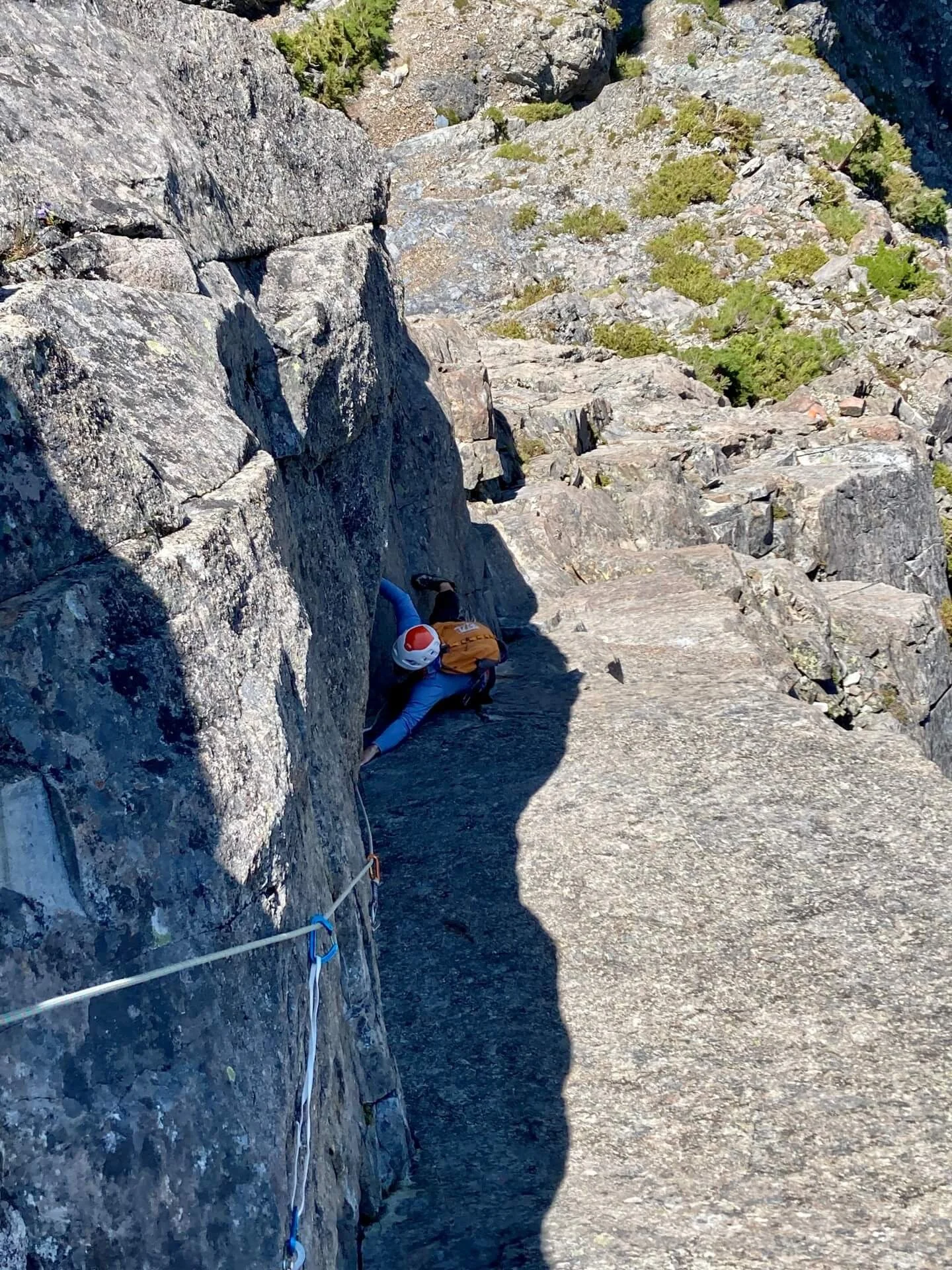
Vesper Peak
Alpine Rock Climbing
Climb stellar alpine rock on the dramatic Vesper Peak. Located in the Glacier Peak Wilderness, Vesper Peak holds several multi-pitch rock climbing routes in a beautiful alpine setting. With several routes at a moderate grade with solid rock, it’s an awesome spot for remote backcountry multipitch rock climbing. It is often possible to climb Vesper Peak in a single day, though many climbers may also wish to enjoy camping at an alpine lake below the peak, utilizing a basecamp to climb multiple routes in one trip.

Intermediate alpine rock climbing with routes ranging from 5.7 to 5.11 and 6 to 10 pitches in length
Previous multipitch rock climbing experience required. Climbers must also be in good physical fitness for a long hike and big days
Routes can be completed in 1 day, car to car, generally around 10-12 hours. It is also possible to camp by a lake below Vesper Peak and link multiple routes for a multiday trip.
Vesper Peak
6,221 ft / 1,896 m
Rock climbing Vesper Peak and routes on nearby mountains in Glacier Peak Wilderness
-
This popular rock climbing route ascends 6 pitches of fantastic rock climbing on the clean granite face of Vesper Peak. Ragged Edge is defined by some delicate face climbing, moderate angle crack climbing and an exciting finish along the final arête to the summit. The moderate grade and wild exposure has made this route a modern classic accessible in a day from Seattle!
-
This fun route ascends just to the left of Ragged Edge for 5 pitches, making for a great back-up plan on busy days or a second lap up the mountain during a multi-day climb. Slightly harder than it’s neighbor, this route has thinner face climbing and an exciting crack climbing pitch high on the wall.
-
Delicate slab climbing, an incredible thin seam and tricky face climbing define this more challenging alpine rock climb. Fish and Whistle ascends the center slab of Vesper Peak and is a great route option for more experienced rock climbers.
-
Before cresting Headlee Pass on the hike in for Vesper Peak, several large towers are to the left with great rock climbing. Taller and more difficult than their neighbor, Vesper Peak, the routes on Vega North Tower can be a great additional challenge for climbers who want to spend a couple days climbing in this zone or as a standalone single day trip.
Mile High Club (5.10-, III): This popular 7-pitch bolted route has fantastic exposure and movement up the steep southwest face of Vega North Tower.
Beyond Redlining (5.10+, IV): This direct route up the west face of Vega North Tower climbs 11 fully bolted pitches, with sustained and thoughtful climbing at the 5.10 grade.












